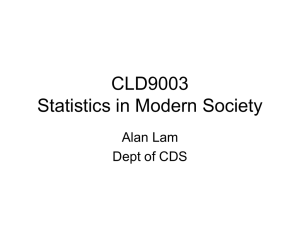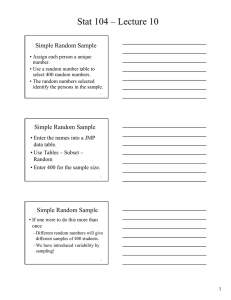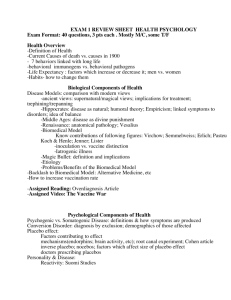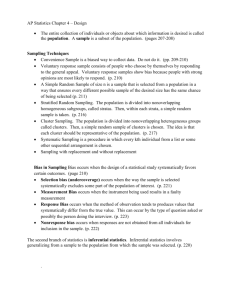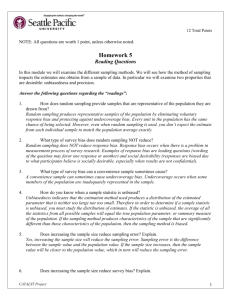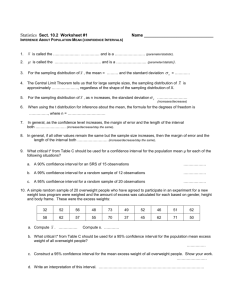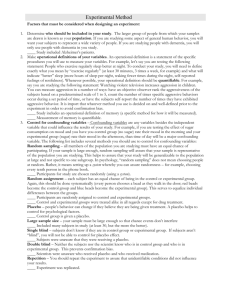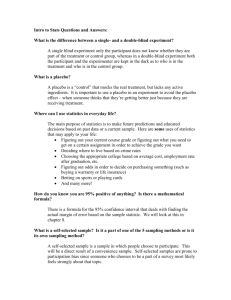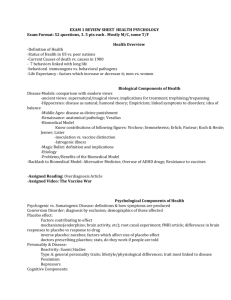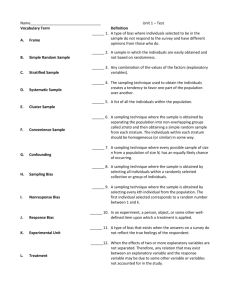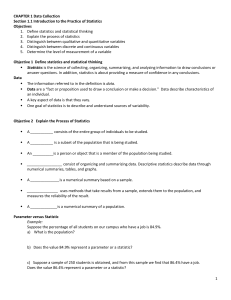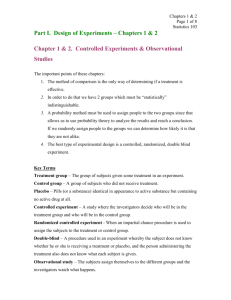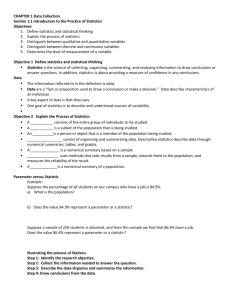Assignment 1 Key - White Plains Public Schools
advertisement
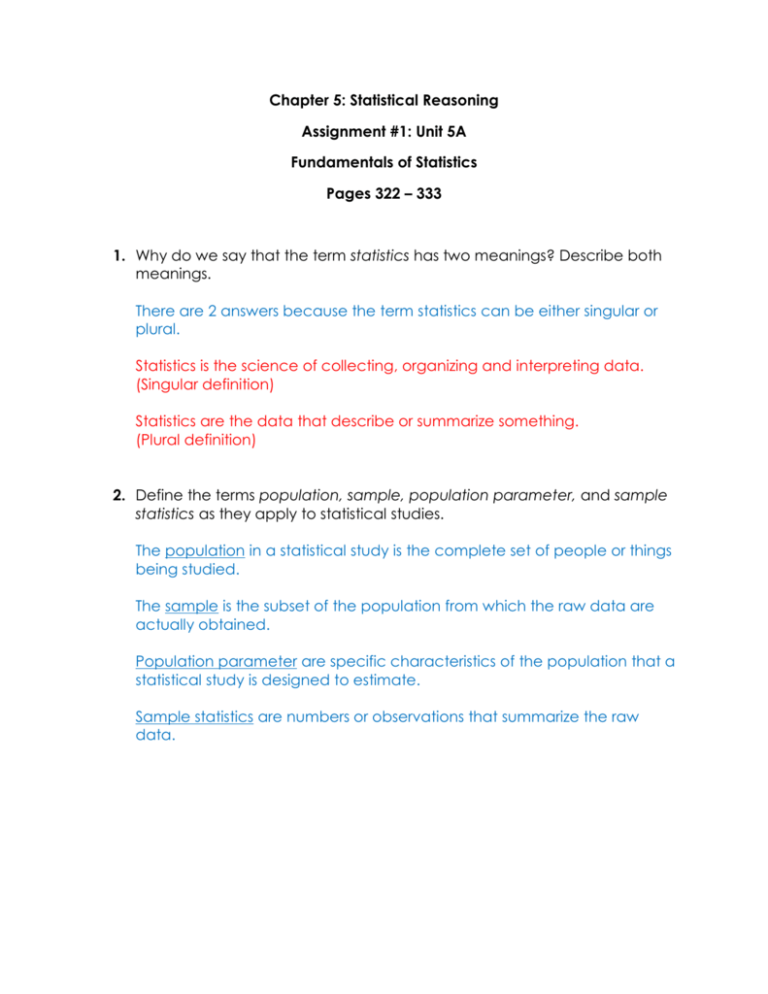
Chapter 5: Statistical Reasoning Assignment #1: Unit 5A Fundamentals of Statistics Pages 322 – 333 1. Why do we say that the term statistics has two meanings? Describe both meanings. There are 2 answers because the term statistics can be either singular or plural. Statistics is the science of collecting, organizing and interpreting data. (Singular definition) Statistics are the data that describe or summarize something. (Plural definition) 2. Define the terms population, sample, population parameter, and sample statistics as they apply to statistical studies. The population in a statistical study is the complete set of people or things being studied. The sample is the subset of the population from which the raw data are actually obtained. Population parameter are specific characteristics of the population that a statistical study is designed to estimate. Sample statistics are numbers or observations that summarize the raw data. 3. Describe the five basic steps in a statistical study, and give an example of their application. 1. State the goal of your study precisely. That is, determine the population you want to study and exactly what you’d like to learn about it. 2. Choose a representative sample from the population. 3. Collect raw data from the sample and summarize these data by finding sample statistics of interest. 4. Use the sample statistics to infer the population parameters. 5. Draw conclusions: Determine what you learned and whether you achieved your goal. 4. Why is it so important that a statistical study use a representative sample? Briefly describe four common sampling methods. So that it is relevant of sample members match those of the population (it should fairly represent the population). simple random sampling – we choose a sample of items in such a way that every sample of a given size has an equal chance of being selected. systematic sampling – we use a simple system to choose the sample, such as selecting every 10th member of the population. convenience sampling – we use a sample that is convenient to select, such as people who happen to be in the same classroom. stratified sampling – we use this method when we are concerned about the differences among subgroups, or strata, within a population. We first identify the subgroups and then draw a simple random sample within each subgroup. 5. What is bias? How can it affect a statistical study? Give examples of several forms of bias. Refers to any problem in the design or conduct of a statistical that tends to favor certain results. Selection bias / Population bias 6. Describe and contrast observational studies and experiments. What do we mean by the treatment group and control group in an experiment? What do we mean by the cases and controls in an observational casecontrol study? In an observational study, researchers observe or measure characteristics of the sample members but do not attempt to influence or modify these characteristics. In an experiment, researchers apply a treatment to some or all of the sample members and then look to see whether the treatment has any effects. The treatment group in an experiment is the group of sample members who receive the treatment being tested. 7. What is a placebo? Describe the placebo effect and how it can make experiments difficult to interpret. How can making an experiment singleblind or double-blind help? A placebo lacks the active ingredients of a treatment being tested in a study. Thus, study participants cannot distinguish the placebo from the real treatment. The placebo effect refers to the situation in which patients improve simply because they believe they are receiving a useful treatment. A single – blind experiment is one in which the participants don’t know which group they belong to, but the experimenters do know. A double-blind experiment is when neither the participants nor the experimenters know who belongs to the treatment group and who belongs to the control group. 8. What is meant by the margin of error in a survey or opinion poll? How is it used to identify a confidence interval? The margin of error in a statistical study is used to describe a confidence interval that is likely to contain the true population parameter. We find this interval by subtracting and adding the margin of error from the sample statistic obtained in the study. That is the confidence interval is: from (sample statistic – margin of error) to (sample statistic + margin of error) Exercises in your textbook: Pages 335-337 Problems 19 - 60
